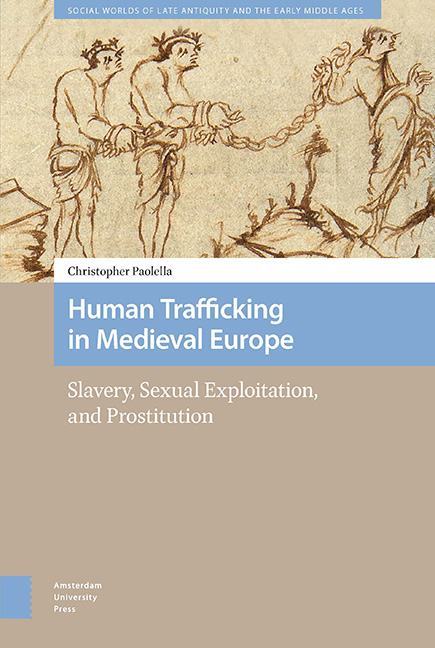1 - Early Medieval Slave Trading
Published online by Cambridge University Press: 21 November 2020
Summary
The image of the early medieval slave trade evokes the violence and terror of sudden raids, of slavers dealing in men, women, and children on Mediterranean beaches, and of the rancorous noise and abject humiliation of the market and the auction block. The commercial and communications networks that allowed human trafficking to flourish in Late Antiquity spanned the Mediterranean and Black Seas, but eventually fractured and regionalized over the course of the sixth and seventh centuries. This chapter will examine these trends in human trafficking patterns in detail, but before we begin, I propose two arguments. First, I argue that human trafficking is adaptive, allowing it to persist in many different socioeconomic and political environments. This adaptability is demonstrated in a number of ways. Human trafficking activity conforms to the socioeconomic systems and political environments in which it takes place, and historically traffickers were both raiders and merchants, which meant that raiding, trading, and trafficking blended and were difficult to disentangle. As the roles of raider, merchant, and trafficker merged, so too did trade routes and trafficking routes, and thus medieval efforts to suppress trafficking also meant the suppression of wider economic activity. Finally, although trafficking networks connected with one another to create wider and more intricate webs of operation, these networks could also operate independently of each other. For example, long-distance trafficking routes abated while local and regional routes persisted or even grew over the course of time, as I will demonstrate.
Second, I argue that centralized political authority is necessary to suppress trafficking; however, that centralized authority must actively commit to and maintain suppression efforts. Centralized political authority may actively engage in human trafficking activities, such as the Byzantine Empire between the eighth and eleventh centuries (which will be discussed at length in Chapter Two), or encourage human trafficking by sanctioning the slave trade, institutionalizing markets, regulating the trade to protect buyers, and by authorizing the support of bureaucratic, religious, and financial institutions for human traffickers, as the Roman Empire did at the height of its power.
- Type
- Chapter
- Information
- Human Trafficking in Medieval EuropeSlavery, Sexual Exploitation, and Prostitution, pp. 41 - 82Publisher: Amsterdam University PressPrint publication year: 2020



